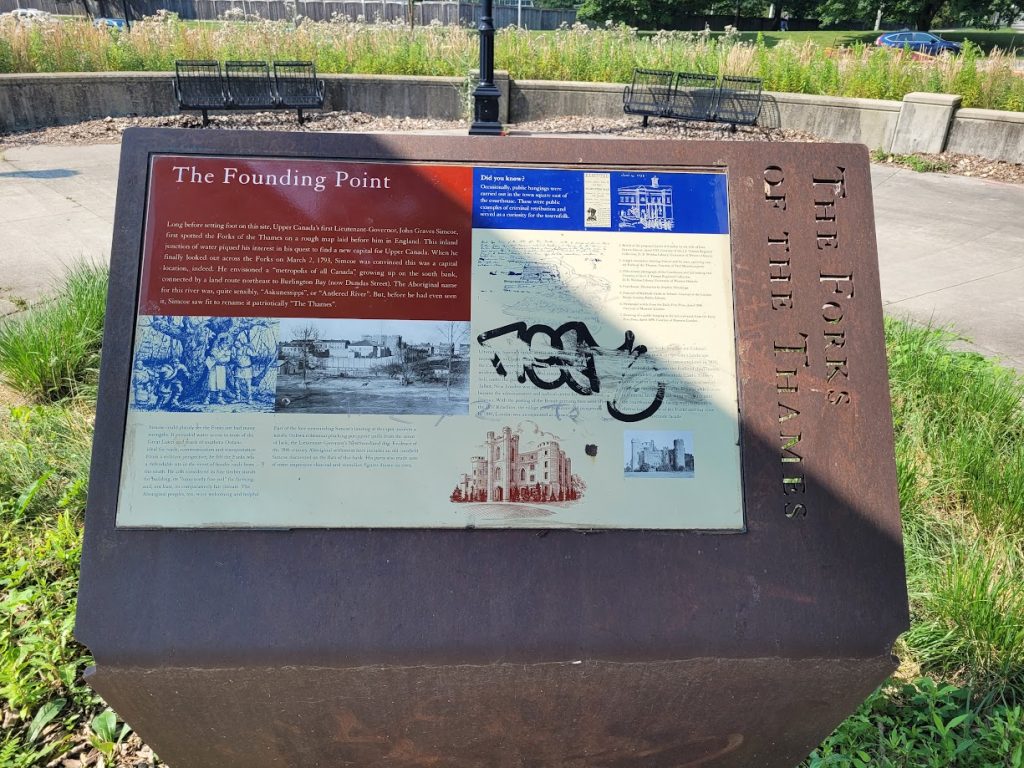Right in the heart of London, Ontario, where the waters of the Thames River split and meet again, sits a quiet monument that tells a powerful story: the birth of a city. Tucked into a green space near the riverbanks, The Founding Point plaque marks the very spot where Upper Canada’s first Lieutenant-Governor, John Graves Simcoe, envisioned something bigger than a river crossing — he saw the potential for a future capital.
It was March 2, 1793, when Simcoe set eyes on this area, then little more than wilderness, but bursting with strategic promise. The confluence of waterways reminded him of England, and inspired him enough to imagine building an inland settlement here, complete with river access and a key route inland. He originally considered the name Auskingsippe (an Indigenous word meaning “Antlered River”) but, true to colonial tradition, opted to christen it “The Thames” instead.
This quiet green park at the Forks of the Thames is more than just a pretty riverbend — it’s the birthplace of London. What started as a vision for a new capital, connected by land to Burlington Bay and water routes to the Great Lakes, has grown into the vibrant and diverse city we know today.
Sadly, the historical plaque has been marred by graffiti — a frustrating reminder of how easily we forget or overlook the roots beneath our feet. But if you look past the scribbles, there’s a rich story of exploration, colonial ambition, Indigenous displacement, and geographic power.
This spot isn’t just a photo op. It’s a reminder that every city, no matter how modern or sprawling, started with one decision. One moment. One view.
So next time you’re walking by the Thames, stop for a second at the Forks. Imagine the silence of the land in 1793. And imagine what Simcoe saw — a future capital, rising from the trees.

